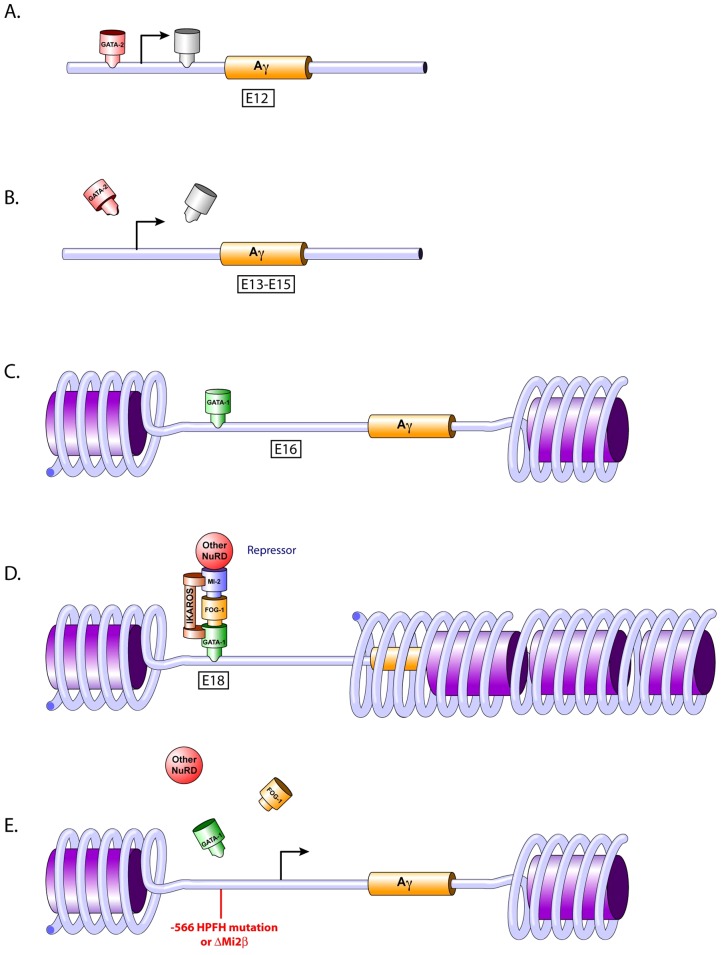Figure 8. Temporal repression model.
A) GATA-2 occupies the −566 Aγ-globin GATA gene silencer at day E12. B) Loss of transcriptional activators. The loss of GATA-2 and other transcriptional activator occupancy at the proximal promoter of the Aγ-globin gene at days E13 to E15 is the initial step in the silencing cascade. C) GATA-1 occupies the −566 Aγ-globin GATA gene silencer at day E16. A post-translational modification of GATA-1 or other determinants might play a role in this occupancy, dictating silencing versus activation by GATA-1. D) Formation of the GATA-1 repressor complex. GATA-1 recruits FOG-1 and Mi2β (and presumably other NuRD components) to the −566 Aγ-globin GATA silencer motif. Ikaros also may be recruited to this silencer region at a nearby Ikaros binding site where it interacts with GATA-1 and Mi2β [29]. E) Disruption of the −566 GATA site γ-globin gene repressor. γ-globin gene expression is reactivated in adult definitive erythropoiesis by preventing the recruitment of theGATA-1-FOG-1-Mi2 complex, either by the presence of the −566 Aγ-globin HPFH mutation or by knocking down the Mi2 subunit of the repressor complex.

